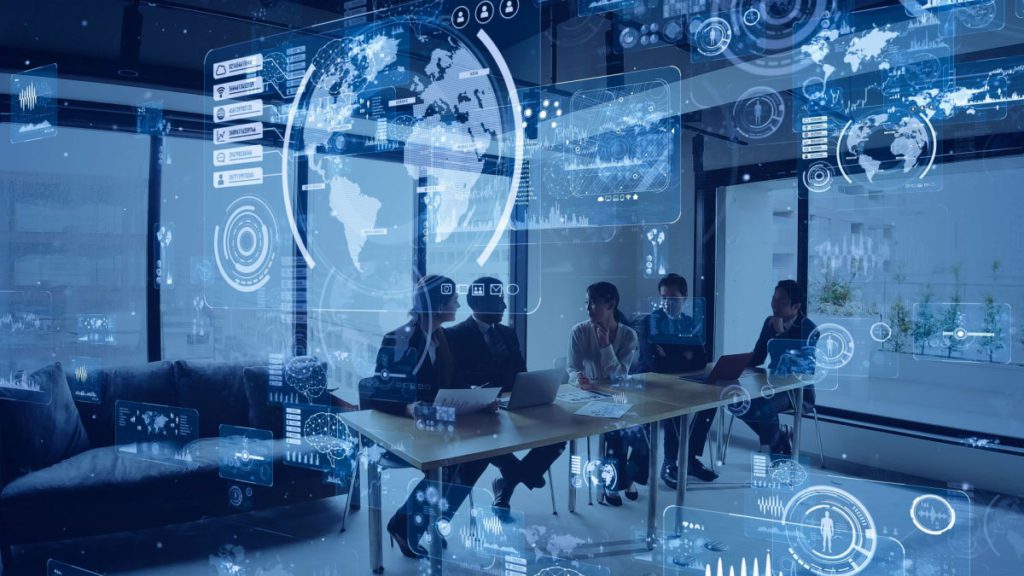Digital transformation isn’t about automating (or in today’s trendy term, “digitizing”) all the stuff you do. It’s about changing the way you think about your business, your industry, and your stakeholders. And — surprise — digital transformation doesn’t usually start with the CIO: It starts with the CEO, with input from the board of directors, reimagining the organization’s culture, markets, products, customer experience, and employee experience.
Having worked for and with many CEOs over the years, I assure you that in most cases, this rethinking doesn’t spring fully formed from the CEO’s brain after a sleepless night. It happens after in-depth consultation with the CXOs, individually and in groups, after research, and after board-level strategy sessions.
In today’s Acceleration Economy, careening from one Next Normal to the next Next Normal, digital transformation isn’t optional. You must do unto others before they do unto you. And I’m sorry to inform you that digital transformation isn’t a one-and-done. It’s a never-ending Observe-Orient-Decide-Act (OODA) Loop that organizations must retool to handle.
What does this mean for the C-suite? It means you’re collectively and individually on the hook for imagining these successive journeys, communicating and championing ongoing organizational change management initiatives, and driving needed changes within your own organizations.
Let’s discuss what new skills and behaviors are necessary when businesses pursue digital transformation.
Become Better Data Consumers
Identify the data you need to make faster, better decisions and make sure it’s being properly collected, formatted, and stored. Then, develop visualizations, dashboards, and early warning indicators that drive the “Orient” and “Decide” OODA Loop steps. Maybe this means pushing your information technology (IT) partners to prioritize your needs. Or it might mean having citizen developers on your own team use low-code tools to mine data and create the analytics you need.
Cast a Wider Net
Most executives spend their careers working in one or several closely aligned industries and working their way up one function (finance, IT, manufacturing, etc.). That makes them better and better at operating the same processes, solving the same problems, and seeing the world from an increasingly narrow view. That’s no longer enough.
- Process. Understand that operating “the best hospital supply chain” or “the best hospital supply chain among cancer hospitals in Southern California” differs from “operating a world-class supply chain” within your hospital.
- Competition. Realize that looking at your traditional competitors as your only source of future competition will doom you in the long run. Think Uber, Airbnb, and Amazon: disruptive market entrants that stayed off traditional competitive radar screens until it was too late to overpower or acquire them.
Where must a CXO look? Everywhere! In addition to your traditional industry news sources, scan fast-cycle social media — Twitter, TikTok, Discord — looking for trends and off-beat news stories. Also, spend time on trade show floors, especially those little booths at the periphery.
Even if you’re not the CMO, start thinking about your products and services (those the firm sells and those your function provides to the rest of the firm) in terms of a fundamental marketing formulation: core product, actual product, and augmented product. What problem are you solving (core product)? What are you “selling” (providing) to solve that problem (actual product)? What does the entire product experience (finding, buying, using) “feel like” to the customer (augmented product)?
By understanding your products and services in terms of “What problem are we solving?”’ versus “What product are we providing?” and by considering the wider environment of problem/solution, you can better frame a discussion about actual and potential competitors.
Technology
Since digital transformation is driven by the promise or the threat of technology, spend time with your peer (the CIO) and have your teams spend time with their peer IT teams. Serendipity plays a big role in discovery!
Regardless of your function, keep asking yourself two questions:
- “What problem could I solve if I had a technology that did ‘X’?”
- “What technology would enable someone to beat us at doing ‘Y’?”
Then go find the CIO and ask:
- “Does this technology exist?”
- “How can we use it given our current tech capabilities?”
- “What’s the risk and cost of using it?”
- “Could anyone else use it better/faster/cheaper than we can to beat us?”
The Role of the CIO in Digital Transformation
While the CIO shouldn’t lead digital transformation, the CIO is a CXO who has special responsibilities in devising and implementing digital transformations. The CIO must “see around technological corners” to identify emerging technologies that can help or hurt their employer. To do this a CIO must not only understand emerging technologies — what they do, how they fit in, and how risky or costly they are — but must also understand enough about the firm, the industry, the markets, and the varied functional areas within the firm to visualize potential opportunities and risks — or at least engage in thoughtful discussions with the rest of the CXOs when they ask questions.
Here’s something I pinned to the top of my LinkedIn Profile (note the 13,000+ interactions) that sums this role up:

If you’re a CEO or a board director, don’t settle for a CIO who does less. And if you’re an Acceleration Economy CIO, set this as your goal: “Transformer, Transform Thyself.”
Want more tech insights for the top execs? Visit the Leadership channel:










